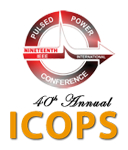Plenary Sessions
Monday | Tuesday | Wednesday | Thursday | Friday
PL1 Monday Plenary
Monday, June 17 08:00-09:15 Grand Ballroom A
Session Chair: Keith Matzen
"PL1-1 National Security Research in Plasma Physics and Pulsed Power: Past, Present, and Future"
Speaker: T. A. Mehlhorn Plasma Physics Division, Naval Research Laboratory, Washington DC, United States
Thomas Mehlhorn is the Superintendent of the NRL Plasma Physics Division,and a member of the Department of the Navy 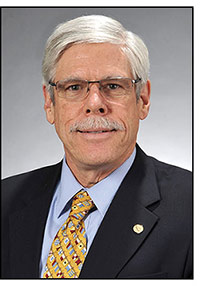 (DoN) Senior Executive Servicewith responsibility for a broad spectrum of research programs in plasma physics, laboratory discharge and space plasmas, intense electron and ion beams and photon sources, atomic physics, pulsed power sources, radiation hydrodynamics, high-power microwaves, laser physics, advanced spectral diagnostics, and nonlinear systems.
(DoN) Senior Executive Servicewith responsibility for a broad spectrum of research programs in plasma physics, laboratory discharge and space plasmas, intense electron and ion beams and photon sources, atomic physics, pulsed power sources, radiation hydrodynamics, high-power microwaves, laser physics, advanced spectral diagnostics, and nonlinear systems.
Dr. Mehlhorn earned his Bachelor of Science, Master of Science and Ph.D in Nuclear Engineering from the University of Michigan in 1974, 1976 and 1978, respectively. He worked at Sandia National Laboratories in Albuquerque, New Mexico as amember of technical staff (1978-1988), department manager (1989-2005), and senior manager (2006-2009). His research interests included intense electron and ion beams generation, focusing and interactions; inertial confinement fusion; high energy density physics; Z-pinch physics; dynamic materials and shock physics; and advanced radiography.
Dr. Mehlhorn is the recipient of numerous merit awards, is a Fellow of the American Physical Society Division of Plasma Physics (APS DPP) (2011) and the American Association for the Advancement of Science (AAAS) in Physics (2006), a Senior Member of the Institute of Electrical and Electronics Engineers (IEEE) (2002), and a member of the American Nuclear Society (ANS) and the American Geophysical Union (AGU).
| (Return to Top of Page) |
PL2 Tuesday Plenary - IEEE NPSS PSAC Plasma Science and Applications Award
Tuesday, June 18 08:00-09:15 Grand Ballroom A
Session Chair: Rickey Faehl
Igor Alexeff Memorial, remarks by Steve Gold (Naval Research Laboratory)
"PL2-1 High Power Gyrotrons and Their Applications"
Speaker: R. Temkin Plasma Science and Fusion Center, MIT, Cambridge, MA 02139, United States
Richard Temkin received a B.A. from Harvard University in 1966, graduating magna cum laude with Highest Honors in Physics. He then received a Ph.D. in Physics at MIT in 1971.
Dr. Temkin has served as the associate director of the MIT Plasma Science and 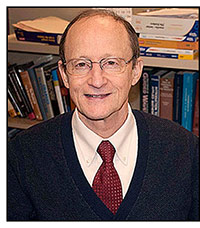 Fusion Center (PSFC) since 1998. He is also the Division Head for the PSFC's Waves and Beams Division. Awards received include the Robert L. Woods Award of the U. S. Department of Defense for Vacuum Electronics, the Certificate of Recognition from the IEEE Electron Device Society, and the Kenneth J. Button Prize and Medal from the Institute of Physics. He is a Fellow of the American Physical Society, IEEE, and the Institute of Physics.
Fusion Center (PSFC) since 1998. He is also the Division Head for the PSFC's Waves and Beams Division. Awards received include the Robert L. Woods Award of the U. S. Department of Defense for Vacuum Electronics, the Certificate of Recognition from the IEEE Electron Device Society, and the Kenneth J. Button Prize and Medal from the Institute of Physics. He is a Fellow of the American Physical Society, IEEE, and the Institute of Physics.
Dr. Temkin's major research projects include:
• Electron Cyclotron Maser/Gyrotron: Experimental and theoretical research on high frequency (50 - 600 GHz), high power (up to 1 MW) gyrotrons and on the application of gyrotrons to plasma heating, radar, and plasma diagnostics.
• High Gradient Acceleration: High gradient electron accelerators capable of operation at gradients above 100 MeV/meter. Novel sources of high power microwaves and novel structures for achieving high gradient acceleration. Laser-photocathode driven RF-guns for use as injectors into high gradient accelerator structures.
• Photonic Bandgap Structures: Novel photonic bandgap structures for use in active devices, including vacuum electron devices and accelerators, and in passive devices such as transmission lines and beam combiners.
• Quasi-Optical Antenna Research: Theoretical and Experimental research on quasi-optical antennas capable of transforming high order waveguide modes into Gaussian beams
• Free Electron Lasers: Novel concepts for the free electron laser including electromagnetic wave wigglers and microwigglers. Application of the FEL to radar,
• Plasma Heating: Heating of plasmas at electron cyclotron resonance using high power millimeter wave sources such as gyrotrons or FELs. Techniques for transmitting,
• High Magnetic Field, Nuclear Magnetic Resonance (NMR): Dynamic nuclear polarization using combined NMR and electron spin resonance (ESR) at high magnetic fields (5 - 10T) for enhanced imaging. Electron paramagnetic resonance (EPR) and spin resonance spectroscopy and spin echo at high magnetic fields.
| (Return to Top of Page) |
PL3 Wednesday Plenary - IEEE Erwin Marx Award
Wednesday, June 19 08:00-09:15 Grand Ballroom A
Session Chair: Pat Corcoran
Ihor M. Vitkovitsky Memorial, remarks by Gerry Cooperstein
"Large Scale Pulsed Power Approaches, Opportunities and Challenges"
Speaker: Ian R. McNab Emergent Power Solutions, Austin, TX, USA
Ian McNab was born and educated in Britain and moved to the United States with his family in 1975. He holds a Ph.D. in Applied 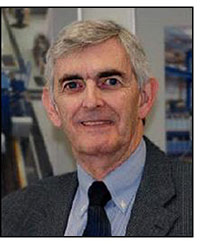 Sciences (Magnetoplasmadynamics, 1974) from the University of Reading and a B.Sc. (Honors Physics, 1960) from the University of Leeds. Prior to moving to the US, Dr. McNab worked at the International Research and Development Co. in Newcastle, England from 1960 to 1975. From 1995 to 2013 Dr. McNab was a scientist and manager at the IAT at the UT in Austin. His positions included Institute Director (Acting), Chief Scientist, and Director of the Electromagnetic Systems Division.
Sciences (Magnetoplasmadynamics, 1974) from the University of Reading and a B.Sc. (Honors Physics, 1960) from the University of Leeds. Prior to moving to the US, Dr. McNab worked at the International Research and Development Co. in Newcastle, England from 1960 to 1975. From 1995 to 2013 Dr. McNab was a scientist and manager at the IAT at the UT in Austin. His positions included Institute Director (Acting), Chief Scientist, and Director of the Electromagnetic Systems Division.
Dr. McNab was involved in IAT’s research programs on electromagnetic and pulsed power tech. on behalf of the Univ. and Institute sponsors, including the US Army, Office of Naval Research, Air Force Office of Scientific Research, Defense Advanced Research Projects Agency. From 1990 to 1994, Dr. McNab was the Vice President for the Major Systems Division at Maxwell Laboratories, Inc., San Diego, CA, where he was involved in electrical pulsed energy systems and development programs for the US and Allied Gov., univ. and industry. From 1984 to 1990, Dr. McNab worked at Westinghouse in Sunnyvale, CA where he was the Technical Director for electromagnetic and pulsed power programs.
From 1975 to 1983, Dr. McNab was employed by the Westinghouse Research Ctr., Pittsburgh, PA, where he was a scientist and manager working on R&D programs. Dr. McNab is a Fellow of the IEEE, the Institute of Physics (UK) and the British Interplanetary Society. He has published 140 scientific papers, including 40 in the IEEE Transactions, and is author/co-author on 15 US and UK patents. He has been a member of the Steering Committee of the International EM Launcher Symposia since 1982 and was a member of the IEEE Pulsed Power and Plasma Sciences Committee for nine years. Dr. McNab has served as a prof. consultant for many US and overseas organizations, giving many conf. presentations. He was awarded Peter Mark Medal - Outstanding Contributions to Electromagnetic Tech. in 1990 and the Lavrentyev Medal for Accomplishments in Electromagnetic Tech. from the Russian Academy of Science (Siberian Branch) in 2003.
| (Return to Top of Page) |
PL4 Thursday Plenary - IEEE Peter Haas Award
Thursday, June 20 08:00-08:00 Grand Ballroom A
Session Chair: Roger White
Dillon H. McDaniel Memorial, remarks by Chris Deeney
"Electro-Technology Evolution for Microbial Inactivation at ROLEST: from Pulsed Power to High Intensity Narrow Spectrum Light (HINS-Light)"
Speaker: S. J. MacGregor, University of Strathclyde, Glasgow, United Kingdom
Scott J. MacGregor received the B.Sc. and Ph.D. degrees from the University of Strathclyde, Glasgow, U.K., in 1982 and 1986, respectively. He is currently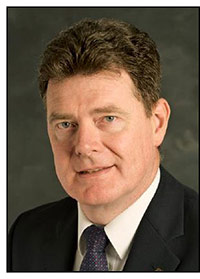 with the University of Strathclyde, where he became a Pulsed-Power Research Fellow in 1986, Lecturer in pulsed-power technology in 1989, Senior Lecturer in 1994, Reader and Professor of high-voltage engineering in 1999 and 2001, respectively. He became Head of the Department of Electronic and Electrical Engineering in 2006 and has been Executive Dean of the Faculty of Engineering at the University of Strathclyde since January 2010.
with the University of Strathclyde, where he became a Pulsed-Power Research Fellow in 1986, Lecturer in pulsed-power technology in 1989, Senior Lecturer in 1994, Reader and Professor of high-voltage engineering in 1999 and 2001, respectively. He became Head of the Department of Electronic and Electrical Engineering in 2006 and has been Executive Dean of the Faculty of Engineering at the University of Strathclyde since January 2010.
Professor MacGregor became the Head of the Pulsed Power Research Group in the Department of Electronic and Electrical Engineering in 1995. He has played a leading role in establishing their international reputation in the field of high voltage engineering and pulsed power technology, including industrial application, and has made significant contributions to both fundamental and applied research in these areas. Notable contributions include research into high-speed electrical breakdown of gaseous and liquid insulating systems, repetitive high-speed gas switching and the development of compact, repetitively-rated modulators for a range of applications, including ozone production and pulsed microwave applications, underwater plasma-acoustic sources, pulsed power for fragmentation of materials and pulsed power enabled plasma channel drilling technology.
In 1998, along with colleagues in the Department of Bioscience, he commenced multidisciplinary research to investigate the biocidal effects of plasma generation in liquids for disinfection purposes as well as the application of non-thermal plasma and pulsed electric field treatment for biodecontamination. In 2004, he established a unique research facility at the University of Strathclyde: The Robertson Trust Laboratory for Electronic Sterilisation Technologies (ROLEST). He is currently Director of ROLEST and is working in partnership with local hospitals, industrial partners, and the Department of Biomedical Engineering, to develop novel electrically based technologies for the inactivation of pathogenic microorganisms.
In 2011, Professor MacGregor and ROLEST colleagues received the prestigious “UK Research Project of the Year” award from The Times Higher Education for the development of a unique technology for the control of pathogens responsible for hospital acquired infections through the use of High-Intensity Narrow-Spectrum Light (HINS® Light). This breakthrough technology is based on the unique bactericidal properties of HINS® light and is already being trialled in clinical burns units, vascular wards and intensive care facilities.
| (Return to Top of Page) |
PL5 Friday Plenary
Friday, June 21 08:00-08:00 Grand Ballroom A
Session Chair: Bryan Oliver
"High Energy Density Science Research at Lawrence Livermore National Laboratory (LLNL)"
Speaker: C. J. Keane NIF User Office, Lawrence Livermore National Laboratory, Livermore, CA, USA
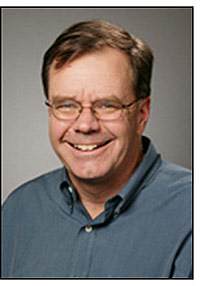 Christopher Keane is Director of the NIF User Office at LLNL. He received B.S. degrees in Physics and engineering from the University of Rochester in 1980. He received his Ph.D. in Plasma Physics from Princeton University in 1986. Following this, Dr. Keane joined the Inertial Confinement Fusion Program at LLNL, performing computational and experimental research in x-ray lasers, inertial confinement fusion, and ultra-high intensity laser–matter interaction. Dr. Keane joined the Department of Energy in 1996 as Associate Director of the Office of Inertial Fusion within the Office of Defense Programs.
Christopher Keane is Director of the NIF User Office at LLNL. He received B.S. degrees in Physics and engineering from the University of Rochester in 1980. He received his Ph.D. in Plasma Physics from Princeton University in 1986. Following this, Dr. Keane joined the Inertial Confinement Fusion Program at LLNL, performing computational and experimental research in x-ray lasers, inertial confinement fusion, and ultra-high intensity laser–matter interaction. Dr. Keane joined the Department of Energy in 1996 as Associate Director of the Office of Inertial Fusion within the Office of Defense Programs.
In 2000, Dr. Keane was named Director of the Division of Secondaries and Inertial Fusion within the National Nuclear Security Administration (NNSA). He was appointed to the Senior Executive Service in 2004, concurrent with his selection as the NNSA Assistant Deputy Administrator for Inertial Fusion and the NIF Project. Dr. Keane rejoined LLNL in 2007. Dr. Keane is a Fellow of the American Association for the Advancement of Science and a member of the American Physical Society. He is the recipient of the NNSA Silver Medal, the Defense Programs Award of Excellence, and the Fusion Power Associates Special Award.
| (Return to Top of Page) |

